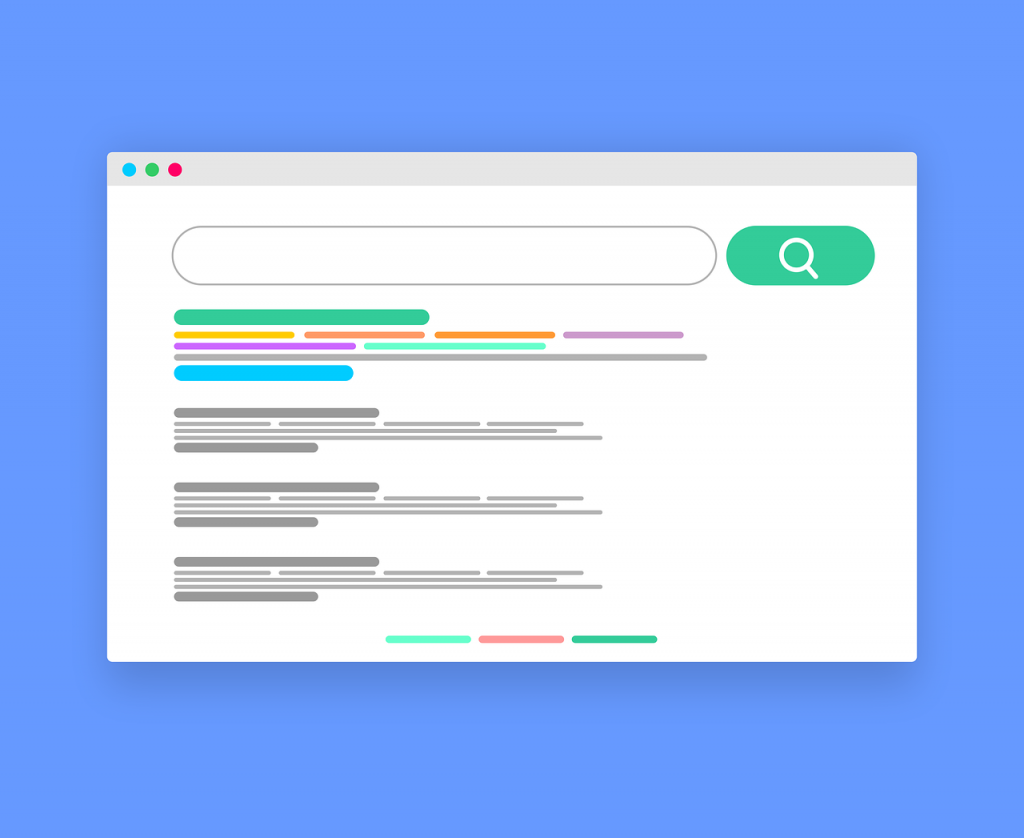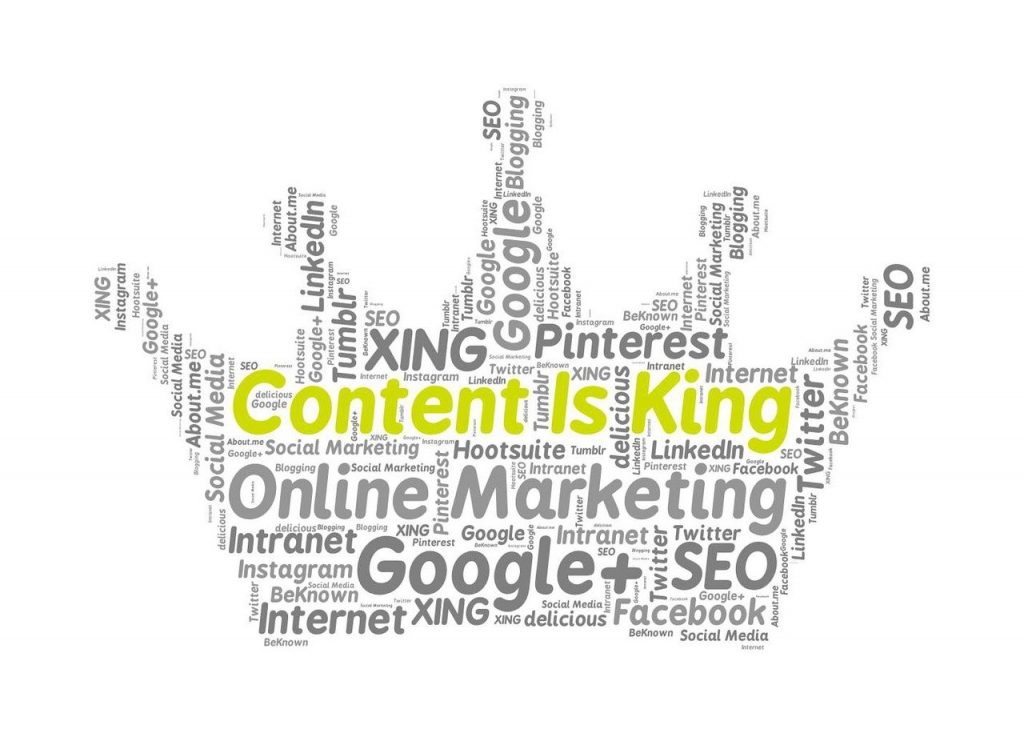Creating content that ranks well on search engines is essential for driving organic traffic, growing brand visibility, and boosting conversions. SEO content creation is not just about writing articles that are keyword-heavy; it’s about creating quality content that answers users’ needs while also being optimized for search engine algorithms.

In this comprehensive guide, we will walk you through the steps to master SEO content creation, including tips and best practices that ensure your content is relevant, engaging, and easy to discover.
What is SEO Content Creation?
SEO content creation involves writing, structuring, and optimizing content in a way that makes it more visible to search engines like Google, Bing, and Yahoo. This process aims to match the intent of the searcher with relevant, high-quality content that answers their questions or fulfills their needs.
It’s essential to note that SEO is not about stuffing your article with keywords. Search engines have evolved and now prioritize content that provides genuine value. This means that simply having the right keywords isn’t enough – you must focus on the user’s experience, intent, and satisfaction. In short, SEO content creation is about building a balance between user-focused and search engine-focused elements.
The Foundations of SEO Content Creation
Content Quality
The foundation of SEO success is high-quality content. To create content that ranks well, you need to address your audience’s pain points, provide solutions, and give insightful information that encourages engagement. Poor-quality content leads to lower rankings and also decreases user satisfaction, leading to high bounce rates.
- Relevance: Your content should directly answer the searcher’s query or provide solutions to their problems.
- Depth: Surface-level content may not provide enough value. Consider offering in-depth guides or comprehensive answers that position your content as a valuable resource.
- Accuracy: Make sure your information is factual, up-to-date, and well-researched. Credibility matters to both search engines and users.
Search Engine Ranking Factors
Search engines use algorithms to evaluate various aspects of your content and website. Understanding these factors is crucial for creating content that ranks well:
- User Experience (UX): This refers to how easy and enjoyable your website is for visitors. Poor UX, like slow loading times or confusing navigation, can drive users away, leading to higher bounce rates, which negatively impact rankings.
- Authority and Trustworthiness: Google uses signals like backlinks from reputable sites, user engagement metrics, and content length to determine the authority of your page.
- Mobile-Friendliness: Google now uses mobile-first indexing, meaning it evaluates your mobile site to determine rankings. Ensure that your website is responsive and optimized for mobile devices.
- Page Speed: If your page loads slowly, users will leave, and Google will take note. Optimizing images, compressing files, and using a reliable web host can help improve page load speeds.
Keyword Research for SEO Content Creation
Keyword research is one of the most important steps in SEO content creation. Without knowing what your audience is searching for, it’s impossible to create content that ranks well.
Tools for Keyword Research
There are many tools available to help you discover what keywords your target audience is using. Some of the most popular include:
- Google Keyword Planner: Great for beginners, it shows keyword volume and competition.
- SEMrush: A more advanced tool that provides in-depth data on keywords, search intent, and competitors.
- Ahrefs: This tool is especially useful for finding backlink opportunities as well as keyword analysis.
Search Intent: Understanding User Goals
Not all searches are the same. For SEO success, you need to understand what kind of content matches different types of searches. Users might search for different reasons, including:
- Informational: The user wants to learn something (e.g., “how to do keyword research”).
- Navigational: The user is looking for a specific website (e.g., “Google Keyword Planner”).
- Transactional: The user is ready to make a purchase or perform an action (e.g., “best SEO tools”).
Incorporating Keywords Naturally
While keywords are important, avoid keyword stuffing, which is the overuse of specific terms in an unnatural way. Instead, aim for a balance:
- Primary Keyword: Your primary keyword should appear in key places like the title, meta description, headers, and within the body of the text.
- Secondary Keywords: Use variations of your primary keyword and related terms to enhance context.
On-Page SEO Best Practices
Optimizing your content for search engines doesn’t stop at inserting keywords. On-page SEO is about making your content technically sound, structured, and optimized to deliver the best user experience. This not only helps search engines understand your content but also improves engagement by making your site easier to use and navigate.
Title Tags and Meta Descriptions
Your title tag is one of the most important on-page SEO elements. It gives both users and search engines a clear understanding of what the content is about.

- Title Tag Best Practices: Your title tag should be concise (60 characters or less), include your primary keyword, and accurately reflect the content of the page. This helps search engines understand your content and boosts click-through rates (CTR) in search engine results pages (SERPs).
- Meta Descriptions: While meta descriptions don’t directly impact rankings, they influence CTRs, which indirectly affects your SEO performance. Crafting a compelling meta description that includes your primary keyword and highlights the content’s value can entice more users to click. Keep meta descriptions under 155 characters for the best display on SERPs.
Header Tags (H1, H2, H3)
Headers play a vital role in organizing content and improving its readability. They also give search engines insight into the structure and hierarchy of your content.
- H1 Tag: The H1 should include your primary keyword and clearly communicate the main topic of the page. This tag is usually the article’s main title and serves as a roadmap for search engines to understand what the content is about.
- H2 and H3 Tags: Subheadings like H2 and H3 tags break up the content into sections. They help both users and search engines navigate the page more efficiently. Using secondary keywords in these headers can further optimize your content and improve relevance for multiple search queries.
Image Optimization
Images are not just about making your content visually appealing. Proper image optimization can significantly impact your on-page SEO, especially in terms of page load speed and user experience.
- Alt Text: Always add descriptive alt text to every image. This helps search engines “read” the image, improving the chances of ranking in image search results. Use your primary or secondary keywords naturally in the alt text where applicable, but ensure that it accurately describes the image.
- File Name: Rename your image files to reflect the content of the image, using descriptive, keyword-rich filenames. For example, instead of “IMG12345.jpg,” use something like “seo-content-creation-guide.jpg.”
- Compression: Large image files can significantly slow down your page, leading to a poor user experience and lower rankings. Use tools like TinyPNG or ImageOptim to compress your images without losing quality.
- Image Dimensions: Ensure that your images are appropriately sized for your web layout. Overly large images can impact page speed, especially on mobile devices.
Mobile-First Indexing
Mobile-first indexing means that Google predominantly uses the mobile version of your content for indexing and ranking. With the majority of users now accessing the internet via mobile devices, mobile optimization has never been more critical.

- Responsive Design: Your site must be responsive, meaning it adjusts automatically to different screen sizes. A responsive design improves usability and is favored by Google’s algorithm. Test your site across multiple devices to ensure seamless performance.
- Page Speed on Mobile: Mobile users expect quick load times, and Google takes this into account when ranking mobile sites. Use tools like Google’s PageSpeed Insights to test how your site performs on mobile devices and make improvements where necessary. Compress images, use browser caching, and reduce server response times to optimize mobile page speed.
- Mobile-Friendly Content: Make sure your content is easy to read on smaller screens. Use larger fonts, avoid large blocks of text, and ensure that buttons and links are easy to click. An intuitive mobile layout can reduce bounce rates and improve user engagement.
Schema Markup
Schema markup is a form of structured data that helps search engines understand the content on your page more clearly. This markup can improve how your page appears in SERPs by enabling rich snippets, such as star ratings, prices, or event details, which can lead to higher click-through rates.
For example, if you’re writing an article, you can add Article Schema to clarify that your page contains blog or news content. Similarly, Product Schema can be used for eCommerce sites to display key product information directly in the search results, like price or availability.
Although adding schema doesn’t directly improve rankings, it can help improve your click-through rate by providing additional information in the SERPs. The enhanced visibility of your content can attract more clicks and even featured snippets.
You can implement schema markup using Schema.org’s structured data guidelines or through Google’s Structured Data Markup Helper. There are also plugins like Yoast SEO and Schema Pro that simplify the process, especially if you’re using WordPress.
Internal Linking
Internal linking refers to linking to other pages within your own website. It serves multiple purposes, including guiding users to related content, spreading link equity (ranking power) across your site, and helping search engines discover new pages.
- Best Practices for Internal Linking:
- Ensure that your anchor text (the clickable part of the link) includes relevant keywords that describe the linked page.
- Link to both new and older content to maintain a strong, cohesive structure.
- Avoid over-using links on a single page. Too many internal links can dilute the effectiveness of each link and confuse both users and search engines.
External Linking
External links (links pointing to other websites) are important for SEO because they show search engines that you’re providing additional context and resources for your readers. Linking to authoritative and relevant sites signals trustworthiness and credibility.
- When to Use External Links:
- Cite external research, statistics, or studies to add credibility to your content.
- Link to relevant articles that further explain complex topics, providing additional value to your audience.
- NoFollow vs. DoFollow: When you link to external sites, they can be tagged as either DoFollow or NoFollow. DoFollow links pass SEO value (or link equity) to the linked site, while NoFollow links do not. While you may want to preserve your site’s link equity, it’s still good practice to include some DoFollow external links to reputable sources as it demonstrates to Google that you’re offering quality references
Writing for Readability and Engagement
Content that is easy to read and engaging holds the reader’s attention, which improves time on site—a key ranking signal.
Structuring Your Content
Break your content into smaller paragraphs, use bullet points, and add subheadings to help with readability. Lists and bullet points are especially useful for highlighting important information.
Avoid Technical Jargon
While it’s important to be informative, you should also avoid overwhelming your audience with complex terms. Write in a clear and straightforward manner.
Adding Visuals
Incorporating images, infographics, or videos not only makes your content more engaging but also helps with SEO. Always optimize your images by including relevant alt text that contains keywords, compress the file size to improve load times, and ensure the visuals are mobile-friendly.

Content Promotion and Distribution
Once your content is live, it’s important to promote it. SEO alone isn’t always enough to attract attention. Promoting your content across multiple channels will increase traffic, engagement, and backlinks.
Social Media Sharing
Share your content on platforms like Twitter, LinkedIn, and Facebook. Although social signals don’t directly impact SEO rankings, they drive traffic and increase visibility, which can lead to backlinks.
Email Marketing
Email newsletters are another way to distribute content to your audience. Include links to your latest blog posts and encourage subscribers to share the content if they find it useful.
Backlink Outreach
One of the most effective ways to improve your content’s ranking is through backlinks. By reaching out to influencers or authoritative sites in your niche, you can request that they link back to your content if they find it valuable.
Measuring SEO Success and Optimizing Performance
Even after publishing your content, the work isn’t done. You’ll need to track its performance and make necessary adjustments to ensure it continues to perform well in search rankings.
Tracking Performance
Use tools like Google Analytics and Google Search Console to monitor how your content is performing. These tools provide insight into traffic, user behavior, and keyword performance. Metrics to focus on include:
- Traffic Volume: How many visitors are landing on your page?
- Bounce Rate: Are users leaving immediately, or are they staying and engaging with your content?
- Rankings: Where does your content rank for the target keywords?
Optimizing Based on Data
If your content isn’t performing as well as you hoped, consider revisiting your keyword strategy, improving internal linking, or updating outdated information. Continuous optimization is key to maintaining relevance and ranking in search results.
Final Thoughts on SEO Content Creation
Mastering SEO content creation takes time, research, and attention to detail. By focusing on creating high-quality, user-friendly content while also optimizing for search engines, you can significantly improve your website’s visibility and organic traffic. Strategies like keyword research, on-page optimization, and using schema markup all play a crucial role in helping your content stand out.
However, SEO is an ongoing process. As algorithms evolve and user behavior changes, keeping your content optimized and up-to-date is essential. Whether you’re just starting out or looking to enhance your current SEO efforts, expert guidance can make a big difference in achieving sustained results.
At Wesrom, we specialize in creating and optimizing SEO content that drives traffic, boosts conversions, and elevates your online presence. Whether you need help with content strategy, keyword research, or technical SEO, our team of experts is here to assist.
Contact us today for a free consultation or visit our SEO Services page to explore how we can help you improve your search rankings and grow your business.
Increasing your website’s conversion rate is essential for driving business growth. Whether you’re aiming for more purchases, sign-ups, or form submissions, optimizing your site for conversions ensures that you’re turning website visitors into customers. Conversion Rate Optimization (CRO) helps you achieve measurable business results by improving the efficiency of your digital assets.

In this comprehensive guide, we’ll walk you through proven strategies to increase your conversion rate and ultimately, your business outcomes.
What Is a Conversion Rate?
A conversion rate is the percentage of website visitors who complete a desired action, such as making a purchase, signing up for a newsletter, or filling out a form. For example, if your website has 1,000 visitors and 50 of them make a purchase, your conversion rate is 5%.
Tracking your conversion rate helps you gauge how effective your site is at converting traffic into leads or customers, which in turn helps you assess the return on investment (ROI) for your marketing efforts.
Here’s a breakdown of common conversion goals:
- E-commerce: Purchases, cart completions.
- Lead generation: Form submissions, newsletter sign-ups.
- B2B: Contact requests, demo bookings.
- SaaS: Free trials, subscription sign-ups.
Knowing your industry’s average conversion rate can also help you set realistic benchmarks. For instance, the average e-commerce conversion rate sits at about 2.58%, while B2B companies typically see higher rates, ranging between 5-10%. Understanding these averages helps you measure how well your site performs relative to your competition.
Common Reasons for Low Conversion Rates
Before we dive into actionable strategies to increase conversion rates, it’s important to recognize the common pitfalls that can lead to low conversion rates. These include:
- Complex or Confusing Website Design: If users find your site difficult to navigate, they’ll leave without converting. A complicated layout or unclear navigation can frustrate visitors and push them away.
- Weak or Unclear Calls to Action (CTAs): Without a strong and obvious CTA, users may not know what step to take next, leading to missed opportunities.
- Slow Page Load Times: Visitors are likely to abandon sites that take too long to load. Studies show that even a one-second delay can reduce conversions by up to 7%.
- Cart Abandonment: High cart abandonment rates are a major issue for e-commerce businesses. Factors like unexpected costs, complicated checkout processes, and lack of payment options can contribute to abandonment.
- Lack of Trust: If your website looks outdated or lacks security features, visitors may be hesitant to convert. Clear trust signals, such as SSL certificates or customer reviews, can alleviate these concerns.
Proven Strategies for Improving Conversion Rate
Once you’ve identified the potential reasons for your low conversion rate, it’s time to implement strategies that will make a tangible difference. Improving your conversion rate isn’t about making arbitrary changes, it’s about using data-driven approaches to optimize the user experience, guide visitors through the funnel more effectively, and encourage action at the right moments.

Below, we’ll explore a series of proven strategies our team has successfully applied to help clients across industries boost their conversions, from refining website design to simplifying checkout processes. The tactics presented are backed by real results, showing just how impactful small, targeted adjustments can be.
1. Optimize Your Website for a Better User Experience (UX)
User experience (UX) plays a pivotal role in determining how easily visitors can navigate your site and take the desired action. A poor user experience can lead to higher bounce rates and fewer conversions.
Simplify Your Design
A clean, well-organized design can help users find what they’re looking for quickly. Avoid cluttering your site with too many elements. Use clear typography, consistent branding, and effective spacing to ensure a smooth experience.
Actionable Tip: Conduct usability testing with real users to see where they struggle to complete tasks on your site. Tools like UserTesting or Hotjar can help you gather valuable insights.
Mobile Optimization
With a significant number of visitors accessing websites on mobile devices, ensuring that your site is mobile-friendly is crucial. A mobile-optimized site should be easy to navigate, with buttons and CTAs clearly visible, and text that doesn’t require zooming.
Key Stat: Research shows that 57% of users will not recommend a business with a poorly designed mobile site. Therefore, mobile responsiveness directly impacts your conversion rate.
Whitespace and Readability
Whitespace is an important design element that allows your content to breathe. It breaks up sections and makes your site more readable. Ensure your text is easy to scan by using bullet points, headings, and short paragraphs.
2. Strengthen Your Call to Action (CTA)
Your CTA is one of the most crucial elements of your website. It tells visitors what action to take and drives them towards conversion. An ineffective CTA could mean the difference between a successful lead and a missed opportunity.
Use Direct, Actionable Language
A strong CTA uses clear and direct language. Rather than generic phrases like “Submit” or “Click Here,” try using action-oriented language like “Buy Now,” “Get Started,” or “Claim Your Free Trial.” This encourages immediate action and makes the next step clear.

Example: One of our e-commerce clients struggled with poor conversion rates despite high traffic. After reviewing their CTA, our team recommended changing the wording from “Submit” to “Get My Discount Today” and repositioning the button above the fold. Within a month, the client saw an 18% increase in conversions, directly attributed to this change in their CTA language and placement.
Strategic Placement of CTAs
Make sure your CTA buttons are placed strategically throughout your site. Place them at the top of the page, near key decision points, and at the end of your content. A CTA should always be visible and easy to find.
Pro Tip: Use a contrasting color for your CTA button to make it stand out. Test different placements and colors using A/B testing to see what works best for your audience.
Create a Sense of Urgency
Phrases like “Limited Time Offer” or “Only a Few Left in Stock” create urgency and prompt users to act quickly. However, use this tactic sparingly to avoid sounding disingenuous.
3. Conduct A/B Testing to Find What Works
A/B Testing, also known as split testing, involves creating two versions of a webpage to see which one performs better. This helps you determine which elements are most effective at driving conversions.
What to Test:
- Headlines: A compelling headline can grab attention and encourage visitors to stay on your page longer.
- CTA Buttons: Test different phrases, colors, or placements to see which ones generate the most clicks.
- Images and Layouts: Visual elements can impact conversion rates. Experiment with different layouts, image sizes, and styles.
Tools for A/B Testing
Platforms like Optimizely, and VWO make it easy to set up A/B tests. These tools allow you to segment audiences and run multiple tests simultaneously.
Example: A SaaS client was unsure why their sign-up form was underperforming. Our team ran A/B tests on various elements, including the headline, CTA color, and form length. After analyzing the data, we implemented the version with a shorter form and more engaging headline. This small tweak resulted in a 24% increase in sign-ups within two weeks, demonstrating the power of data-driven design decisions.
Measure Results
When running an A/B test, focus on key metrics like conversion rate, click-through rate, and bounce rate. Make data-driven decisions based on what works best for your audience.
4. Leverage Data Analytics for Better Insights
Understanding how visitors interact with your website is essential for conversion rate optimization. Data analytics tools can provide valuable insights into user behavior, allowing you to make informed changes.
Use Heatmaps and Session Recordings
Heatmaps show you where visitors are clicking and scrolling on your site, which helps you identify areas of interest or confusion. Session recordings allow you to watch real-time user interactions, so you can see where users might be dropping off.
Tools like Hotjar, Crazy Egg, and FullStory offer heatmaps and session recordings, helping you uncover opportunities to optimize.
Track Key Metrics
Regularly monitor metrics such as:
- Bounce rate: How many users leave your site without interacting.
- Average session duration: How long visitors stay on your site.
- Exit pages: Which pages are causing users to leave.

By identifying problem areas, you can implement targeted improvements.
5. Speed Up Your Website to Improve Conversions
Page speed is a critical factor in user experience and conversion rates. A slow-loading website frustrates users, causing them to abandon it before converting.
Compress Images and Use Optimized File Formats
Large image files are one of the most common causes of slow page load times. Use image compression tools like TinyPNG or ShortPixel to reduce file sizes without compromising quality. Also, use modern file formats like WebP for even better performance.
Use Browser Caching and Minify Code
By enabling browser caching, users can store your site’s static resources (like images and scripts) on their local devices, which reduces load times on repeat visits. Minifying your code—removing unnecessary spaces, line breaks, and comments—can also enhance site speed.
Leverage a Content Delivery Network
A Content Delivery Network (CDN) ensures that your website’s data is distributed across multiple servers worldwide, reducing the distance between your server and your users. This helps improve load times, especially for global visitors.
Example: An online retailer approached us after noticing high bounce rates and poor conversion metrics. Our team identified slow page load times as a key issue. We optimized image sizes and implemented a CDN. As a result, page load times dropped from 5 seconds to just under 2 seconds, leading to a 30% boost in conversions. This speed improvement not only enhanced the user experience but also had a direct impact on sales.
6. Build Trust with Social Proof
Social proof is a psychological phenomenon where people look to others’ actions to inform their own decisions. Building trust through social proof can significantly increase conversions.
Display Customer Reviews and Testimonials
Positive reviews and testimonials show potential customers that others have had a good experience with your brand. Display them prominently on product pages or the homepage to build credibility.
Pro Tip: Use third-party review platforms like Trustpilot or Yelp to showcase authentic reviews.
Use Trust Badges and Certifications
Trust badges – like SSL certificates, payment security icons, and money-back guarantees – instill confidence in users, especially during the checkout process.
Showcase Case Studies
For B2B companies, case studies offer compelling evidence of your ability to deliver results. Include detailed case studies that show how you’ve helped clients achieve specific goals, such as increasing their sales or improving their lead generation efforts.
7. Personalize Your Website for Individual Users
Website personalization allows you to tailor the content and experience for each user based on their behavior, preferences, or demographics. Personalized experiences can greatly increase engagement and conversions.
Dynamic Content
Use dynamic content that adapts based on the visitor’s past interactions. For instance, you can display product recommendations based on previous purchases or browsing history.
Personalized CTAs
Tailor your CTAs to different user segments. For example, first-time visitors could see a CTA for signing up for a newsletter, while returning visitors might see an offer for a discount on their next purchase.
Example: Amazon’s personalized recommendation system is a perfect example of how personalization can lead to increased conversions. By suggesting relevant products, Amazon drives a significant portion of its revenue through upsells and cross-sells.
8. Simplify Your Checkout Process
A complicated or lengthy checkout process can cause cart abandonment, especially for e-commerce businesses. Simplifying this process can lead to a significant increase in conversions.
Minimize Form Fields
Only ask for the information you absolutely need. Studies have shown that reducing the number of form fields can lead to higher completion rates.
Example: Expedia increased their revenue by $12 million annually by removing a single optional field in their booking form.
Offer Multiple Payment Options
Offering multiple payment options such as PayPal, Apple Pay, or Google Pay can reduce friction for customers and improve conversion rates.
Provide a Guest Checkout Option
Forcing users to create an account before completing a purchase is a common barrier to conversion. Offering a guest checkout option can speed up the process and reduce cart abandonment.
9. Create Targeted Retargeting Campaigns
Not all users will convert on their first visit. Retargeting is a strategy that allows you to reach users who have previously visited your site but didn’t convert. By showing them targeted ads, you can bring them back and encourage them to complete the desired action.
Use Dynamic Retargeting Ads
Dynamic retargeting ads display the exact products or services a visitor viewed, reminding them of their initial interest. These ads can be particularly effective in the e-commerce space, where users may browse but not immediately make a purchase.
Segment Your Audience
Segment your retargeting audience based on behavior, such as cart abandoners, product page viewers, or blog readers. This allows you to create highly personalized ad campaigns for each group, improving relevance and engagement.
10. Use Exit-Intent Popups to Capture Leads
Exit-intent popups appear when a user is about to leave your website. These popups offer one last opportunity to capture leads or convert visitors before they exit.
Offer a Special Deal or Discount
Exit-intent popups that offer a discount or promotion can be particularly effective in convincing users to complete their purchase. For example, offering a 10% discount for first-time buyers can turn an abandoned cart into a completed order.
Example: One of our fashion retail clients had a cart abandonment rate above industry standards. We recommended implementing exit-intent popups offering a 10% discount for first-time buyers. After deploying the popup, the client saw a 50% increase in completed purchases within a month, as the offer effectively convinced hesitant shoppers to complete their transactions.
Collect Emails
If a user is about to leave, use exit-intent popups to collect their email in exchange for a resource, such as a free eBook, newsletter, or exclusive offer. This gives you the opportunity to nurture them through email marketing.
Final Thoughts: Increase Your Conversion Rate Today
Increasing your conversion rate requires a combination of data-driven strategies and user-centered design improvements. By optimizing your website for user experience, simplifying your checkout process, and using targeted retargeting campaigns, you can turn more visitors into customers and boost your bottom line.
Our team of experts specializes in Conversion Rate Optimization and can help you implement tailored strategies to drive better results. Contact us today for a free CRO consultation and start converting more visitors into customers!
Introduction
In a world where we are constantly bombarded with information, content creation has become an essential tool for businesses, influencers, and organizations looking to connect with their audience. Content creation is no longer just a side task; it’s the foundation of building trust, growing a brand, and driving engagement.
This article will walk you through the ins and outs of content creation, from what it is, why it matters, and how to create content that stands out in a competitive environment. Whether you’re a beginner or someone looking to refine your process, this guide will help you take the right steps toward effective content creation.

What is Content Creation?
At its core, content creation is the process of generating material that serves a purpose for an audience. This could be anything from blog posts, articles, videos, infographics, social media posts, to podcasts and more. Each piece of content is designed to inform, engage, or entertain the audience while supporting specific goals, like driving website traffic, boosting engagement, or building brand awareness.
Let’s break down some of the most common types of content:
Written Content
Written content is a broad category that includes blog posts, articles, white papers, case studies, and eBooks. Blog posts, for example, are one of the most popular types of content for educating an audience, sharing expertise, or boosting SEO. Articles and case studies, on the other hand, are used to provide in-depth information or data-backed insights on a specific topic.
Visual Content
Visual content includes images, infographics, illustrations, and presentations. It simplifies complex information and makes it easier to consume. Infographics, for instance, are great for presenting data or processes in a visually engaging way, making the information more memorable.
Video Content
Video is one of the fastest-growing forms of content creation, with platforms like YouTube, TikTok, and Instagram making it easier than ever to produce and share video content. From short, informative videos to long-form storytelling, video allows you to engage your audience in a way that is both dynamic and personal.
Social Media Content
Social media posts are short, digestible pieces of content that can be shared across platforms like Facebook, Instagram, LinkedIn, and Twitter. These posts can take many forms, from text updates to images and videos, and are often designed to encourage interaction, like comments, shares, or likes.

Audio Content
Podcasts and audio clips are becoming more popular as people increasingly consume information while on the go. Audio content is perfect for discussing complex topics, conducting interviews, or telling stories in a conversational format.
The Importance of Content Creation in Marketing
Content creation is vital in digital marketing strategies because it helps drive organic traffic, increases engagement, and builds brand credibility. Creating high-quality content can support various business objectives, from improving SEO to nurturing customer relationships.
Content Creation and SEO
Search engines like Google prioritize websites that offer valuable and relevant content to users. By producing optimized, keyword-rich content, you increase the likelihood that your site will rank higher in search engine results pages (SERPs). This means more visibility for your brand and, ultimately, more traffic to your website.
Example: A company that sells eco-friendly products might create blog posts about sustainability, using keywords like “eco-friendly tips” or “sustainable living” to attract search traffic interested in these topics.
Building Trust and Authority
Content creation also plays a key role in establishing your brand as an authority in your industry. Regularly producing content that offers valuable insights or advice builds trust with your audience. Over time, this trust leads to loyalty, with customers more likely to choose your brand over a competitor.
Example: An accountant could create a series of blog posts explaining tax tips for small businesses. By offering clear, useful information, the accountant builds trust with potential clients who may later hire them.
Engaging Your Audience
Effective content creation encourages interaction and engagement. Whether through blog comments, social media likes, or video shares, engaging content sparks conversations and fosters community around your brand. The more engaged your audience is, the more likely they are to become loyal customers.
Most Popular Types of Content Creation
Blogs and Articles
Blogs and articles are a great way to share valuable information, boost your SEO, and establish your brand’s authority. They allow you to go in-depth on topics that matter to your audience while incorporating keywords that help you rank in search engines. Writing regularly also helps maintain a consistent online presence, keeping your audience engaged over time.

Video Content
Video is perhaps the most engaging type of content you can create today. With platforms like YouTube, Instagram, and TikTok, videos have the potential to reach a vast audience. The key to successful video content is to keep it short, engaging, and informative.
Social Media Posts
Social media posts allow you to connect with your audience on a personal level. Platforms like Facebook, Instagram, and Twitter are ideal for sharing quick updates, behind-the-scenes content, or engaging with your audience directly. The key to successful social media content is consistency and relevancy.
Podcasts
Podcasts are growing in popularity, especially as more people consume audio content during their daily routines. Hosting a podcast allows you to build a deeper connection with your audience by discussing topics in a more personal and conversational way.
Step-by-Step Guide to Creating Effective Content
Creating content is not as simple as it might seem. It requires careful planning, execution, and analysis. Here’s a step-by-step guide to help you create effective content that resonates with your audience.
Step 1: Research and Understand Your Audience

Before you can create content that resonates, you need to understand your audience. What are their interests, pain points, and questions? Use tools like Google Analytics, Facebook Audience Insights, and Surveys to learn more about your audience’s preferences.
Step 2: Set Clear Goals for Your Content
Every piece of content should serve a purpose. Are you trying to drive traffic, increase engagement, or generate leads? Defining your goals will shape the content you create.
Step 3: Develop a Content Strategy
Creating content without a strategy is like sailing without a map. A content strategy outlines what type of content you’ll create, when you’ll post it, and where you’ll distribute it. This helps keep your efforts focused and consistent. Develop a content calendar to map out your topics and schedule.
Step 4: Choosing the Right Platforms
Different content performs better on different platforms. Blogs are great for SEO, videos for YouTube, and quick updates for social media. Match your content to the platform where your audience spends the most time.
Step 5: Content Production
Content production is where you bring your ideas to life. Whether you’re writing, filming, or designing, make sure your content is clear, valuable, and engaging. Use tools like Canva for design or Grammarly for writing to ensure your content is polished.
Step 6: Optimize Content for SEO
Once your content is created, ensure it’s optimized for search engines. This means using relevant keywords, adding meta descriptions, and ensuring fast page loading times.
Step 7: Distribution and Promotion
Even the best content won’t make an impact if no one sees it. Share your content across your platforms, and consider using paid ads to boost visibility if necessary. Tools like Hootsuite can help manage and schedule your social media posts.
Step 8: Measure and Analyze Results
Finally, track how your content performs. Use tools like Google Analytics, HubSpot, or Social Media Insights to measure key metrics like engagement, traffic, and conversions. This will help you refine your strategy for future content.
Best Practices for Content Creation
Content creation isn’t just about producing more; it’s about producing better. Following best practices ensures that your content resonates with your audience, performs well in search engines, and helps achieve your business goals. Here are some key practices that successful content creators swear by:
Be Consistent
Consistency is key to building an audience. Whether you’re running a blog, a YouTube channel, or social media profiles, posting regularly helps keep your audience engaged and interested. Consistency also builds trust; when your audience knows they can count on you for regular content updates, they are more likely to stay loyal.
Imagine a fitness trainer who posts new workout videos every Monday, Wednesday, and Friday. Her audience knows when to expect new content, and they tune in accordingly. Over time, this schedule helps build a dedicated viewership.
Consistency isn’t just about timing but also about maintaining a consistent tone, style, and message across all your platforms. This helps reinforce your brand identity and makes your content more recognizable.
As a useful tip, use a content calendar to schedule your posts. This can help you plan your content and ensure you stay on track without feeling rushed or missing deadlines.
Focus on Quality Over Quantity
While consistency is important, it’s equally critical that your content provides value. Publishing too frequently can sometimes lead to a drop in quality, which can hurt your brand reputation. Instead, focus on delivering well-researched, high-quality content that serves a purpose for your audience.
For example, consider two blogs about digital marketing. One publishes daily but with thin, shallow content. The other publishes once a week with in-depth, insightful posts. The second blog will likely attract more loyal readers because its content is more valuable.
Remember, quality content answers your audience’s questions, solves their problems, or entertains them in a meaningful way. It’s content that leaves an impact, whether it’s educational, inspirational, or entertaining.
Use Visuals to Enhance Engagement
The saying “a picture is worth a thousand words” applies heavily to content creation. Visuals like images, infographics, videos, and diagrams make your content easier to understand, more memorable, and more shareable. Studies show that people retain 65% of information when it’s accompanied by visuals, compared to just 10% when it’s only text.
For instance, a blog post about healthy eating might be more engaging if it includes photos of nutritious meals, colorful infographics about nutrition facts, or a short video demonstrating a quick recipe. This not only keeps readers engaged but also makes the information easier to digest.
Adding visuals is especially important for complex or data-heavy content, where graphs, charts, or illustrations can simplify difficult concepts and make the message clearer.
If you lack design skills, tools like Canva or Piktochart can help you create professional-looking visuals quickly and easily.
Be Authentic and True to Your Brand
In the crowded world of content creation, authenticity is your differentiator. Consumers can tell when content feels forced or disingenuous, and they appreciate brands that communicate honestly and openly. Authenticity builds trust, which leads to better relationships with your audience.
For example, a beauty influencer who shares honest, unfiltered reviews and behind-the-scenes content is likely to build stronger trust with her audience than one who only posts sponsored, polished photos. Authenticity helps create a connection that goes beyond a mere transaction.
Being authentic doesn’t mean sharing every detail of your life or business, but it does mean staying true to your voice, values, and message. Avoid overly salesy language or trying to sound like someone you’re not.
Repurpose and Recycle Content
One effective strategy for maximizing the value of your content is repurposing it across different formats and platforms. Repurposing allows you to reach a broader audience without creating entirely new content every time. It also breathes new life into older content that may still be relevant but no longer getting views.

A blog post can be transformed into a video, podcast episode, infographic, or social media post. You could also update an old article with fresh data or new insights and republish it. This helps you make the most of your content without having to constantly come up with new ideas.
Repurposing content also increases the chances of reaching different segments of your audience. Some people prefer reading blog posts, while others might prefer watching a video or listening to a podcast.
Tools and Resources for Content Creation
Creating high-quality content can be challenging, but there are numerous tools available to make the process more efficient and effective. Whether you’re designing visuals, optimizing your content for SEO, or scheduling social media posts, these tools can streamline your workflow and improve the quality of your output.
Canva: For Visual Content Creation
Canva is a popular tool for creating graphics, infographics, presentations, and other visual content. Its user-friendly interface allows even non-designers to create professional-looking visuals with ease. Canva offers a wide variety of templates, fonts, and images, which makes it easy to design anything from social media posts to blog graphics.
Grammarly: For Polished, Error-Free Writing
Good writing is crucial in content creation, and Grammarly helps you ensure your content is error-free, clear, and easy to read. It checks for grammar, punctuation, and spelling errors, but it also goes beyond basic corrections. Grammarly offers suggestions to improve tone, clarity, and style, ensuring your content is as polished as possible.
Hootsuite: For Social Media Management
Managing multiple social media accounts can be time-consuming, but Hootsuite makes it easy to schedule, track, and manage posts across different platforms from one dashboard. It helps streamline the process, allowing you to plan content in advance and ensure consistent posting without having to manually upload posts each day.
Google Analytics: For Tracking Content Performance
Google Analytics is a powerful tool for tracking the performance of your website content. It allows you to see how visitors interact with your site, what content they engage with the most, and where your traffic is coming from. This data is invaluable for refining your content strategy and ensuring you’re creating content that meets your audience’s needs.
BuzzSumo: For Content Research and Trends
BuzzSumo is a tool that helps you discover trending topics, popular content, and industry influencers. It’s perfect for brainstorming new content ideas and understanding what your audience is most interested in. By analyzing what’s already performing well, you can create content that is more likely to resonate with your audience.
Wrapping Up: Creating Content the Right Way
Content creation is an ongoing process that requires research, planning, and optimization. By understanding your audience, setting clear goals, and leveraging the right tools, you can create content that engages your audience and supports your business objectives. With the best practices and tools in place, your content creation efforts will be more efficient and impactful. These tools make it easier to maintain quality and consistency, while the best practices ensure your content remains relevant, engaging, and authentic.
Creating high-quality content is a rewarding process that, when done right, can set you apart from the competition and lead to lasting success.
At our digital marketing agency, we specialize in helping companies like yours build powerful content strategies that drive results. If you’re looking to take your content strategy to the next level, let’s talk. We’re ready to help your business develop a tailored approach that brings measurable success. Contact us today to start creating content that matters.
User-generated content (UGC) has become an essential part of many successful campaigns. UGC includes any form of content—such as text, images, videos, and reviews—that is created by users rather than brands. This type of content is often shared on social media platforms, websites, and other digital spaces, making it a valuable asset for companies looking to connect with their audience. The authenticity of UGC makes it particularly effective, as consumers tend to trust the experiences and opinions of their peers more than traditional advertisements. By understanding what UGC is and how to use it effectively, brands can increase engagement, build trust, and boost their overall marketing efforts.

What is User-Generated Content?
User-generated content refers to any content created and shared by individuals rather than by the brand itself. This can include a wide range of content types, such as:
- Text: Blog posts, social media comments, testimonials, and reviews.
- Images: Photos taken by customers showcasing products, often shared on Instagram, Facebook, or Pinterest.
- Videos: Customer-created videos, unboxing clips, tutorials, or reviews shared on platforms like YouTube or TikTok.
- Audio: Podcasts or voice recordings where users discuss their experiences with a brand.
These types of content are powerful because they come from real users, reflecting their genuine experiences and opinions. For example, a customer posting a picture of their new shoes on Instagram and tagging the brand is an example of UGC. This content is valuable because it provides social proof, showing potential customers that real people are enjoying the products.
Benefits of User-Generated Content
User-generated content offers several benefits that make it a key component of a successful marketing strategy. Let’s discuss the main advantages.
Authenticity and Trust
One of the most significant benefits of UGC is its authenticity. People are more likely to trust content created by other users rather than content created by the brand. According to a study by Nielsen, 92% of consumers trust organic, user-generated content more than traditional advertising. When customers see real users sharing their experiences with a product, they are more likely to trust the brand and feel confident in their purchase decisions.
Increased Engagement
UGC encourages more interaction on social media platforms and websites. When users create content about a brand, it often leads to more likes, shares, and comments. This increased engagement can help build a stronger community around the brand. For instance, GoPro, a popular camera brand, often shares videos created by its users. These user-generated videos not only showcase the product in action but also encourage other users to create and share their own videos.
Cost-Effectiveness
Creating high-quality content can be expensive and time-consuming. UGC offers a cost-effective alternative because it relies on users to create the content. Brands can save on content creation costs while still providing fresh and engaging material to their audience. This makes UGC an attractive option, especially for small businesses or startups with limited marketing budgets.
SEO and Visibility
User-generated content can improve a brand’s visibility on search engines. When users share content that includes the brand’s name, products, or relevant keywords, it increases the chances of appearing in search results. Additionally, UGC can provide backlinks to the brand’s website, which can boost its search engine ranking. For example, a user sharing a blog post about their experience with a product can include a link to the brand’s website, helping to drive organic traffic.
Social Proof
UGC acts as social proof, showing potential customers that others are already using and enjoying the product. This can influence the decision-making process and encourage more people to buy. Seeing real users with positive experiences can have a powerful impact on potential customers, making them more likely to trust and engage with the brand.

How to Encourage User-Generated Content
Encouraging customers to create and share content can be challenging, but there are several strategies that brands can use to motivate their audience.
Incentives and Contests
One effective way to encourage UGC is by offering incentives or running contests. Brands can ask customers to share their experiences in exchange for a chance to win a prize or receive a discount. For example, a clothing brand could run a photo contest where participants share pictures of themselves wearing the brand’s products. These types of campaigns not only encourage content creation but also increase brand awareness and engagement.
Social Media Hashtags
Creating a branded hashtag is a simple yet effective way to encourage UGC. Brands can promote a unique hashtag and ask their audience to use it when sharing content related to the brand. This makes it easier for the brand to find and share user-generated content. For instance, Starbucks uses the hashtag #StarbucksMoment to encourage customers to share their coffee experiences. This not only helps in creating a sense of community but also provides the brand with a wealth of content to share.
Customer Engagement
Actively engaging with customers can also encourage UGC. Brands can ask questions, request feedback, or prompt customers to share their experiences. Simple actions like responding to comments, liking posts, or resharing user content can make customers feel valued, encouraging them to create more content in the future. For example, beauty brand Glossier often reshapes content from its customers, showing appreciation for their creativity and building a loyal community.
User-Friendly Platforms
Making it easy for users to share their content is important. Brands should choose platforms where their audience is most active and where sharing content is straightforward. For example, using social media platforms like Instagram, Facebook, or TikTok, where users can easily upload photos and videos, can be very effective. Additionally, brands can create dedicated sections on their websites where customers can submit reviews, photos, or videos.
Implementing a User-Generated Content Strategy
A successful UGC strategy requires careful planning and execution. Here are some key steps to consider:
- Setting Goals: The first step in implementing a UGC strategy is to set clear goals. Brands need to define what they want to achieve with user-generated content. Common goals include increasing brand awareness, boosting engagement, or driving sales. By setting specific goals, brands can better measure the success of their UGC campaigns and make adjustments as needed.
- Identifying the Right Platforms: Choosing the right platforms is crucial for a successful UGC strategy. Brands need to be present where their audience is most active. For some, this might be Instagram or TikTok; for others, it could be YouTube or a niche online community. Understanding where users prefer to share content will help brands reach their target audience more effectively.
- Content Moderation: While UGC is authentic, it’s important to ensure that the content aligns with the brand’s values and messaging. Having a moderation process in place allows brands to review and approve content before it is shared. This helps in maintaining quality and relevance while avoiding any potential issues. For example, brands can use content moderation tools or hire community managers to monitor user-generated content.
- Legal Considerations: Using UGC requires an understanding of legal aspects, such as rights and permissions. Brands must have clear guidelines on how user content will be used and ensure they have permission to share or promote it. This not only protects the brand but also builds trust with the users, showing that their content is respected. Brands can use disclaimers or terms and conditions to outline how user content will be used.
Best Practices for Using User-Generated Content
To maximize the impact of UGC, must implement thoughtful strategies that encourage, curate, and amplify this content effectively. Here are some essential best practices to follow.
Highlighting the Creators
Giving credit to the users who create content is important. Brands should always tag or mention the original creator when sharing UGC. This recognition not only shows appreciation but also encourages more users to create and share content. For example, Airbnb often features photos from guests on its social media channels, giving credit to the photographers and encouraging others to share their experiences.
Diverse Content Types
Using different types of UGC keeps the audience engaged. Brands can share photos, videos, reviews, and even user stories. By mixing different content types, brands can appeal to a broader audience and keep their marketing efforts fresh and interesting. For instance, fitness brands can share workout videos, success stories, and product reviews to engage with different segments of their audience.
Consistency
Regularly sharing UGC is key to maintaining engagement. Brands should have a consistent plan for sharing user-generated content. Whether it’s once a day or a few times a week, consistency helps keep the brand in the minds of consumers and encourages ongoing participation. A content calendar can help brands plan and schedule UGC posts, ensuring a steady flow of content.
Monitoring and Measuring
To understand the impact of UGC, brands need to track its performance. Tools and metrics can help measure how UGC is affecting engagement, reach, and conversions. By analyzing these metrics, brands can adjust their strategies to improve results and better meet their goals. For example, brands can use social media analytics tools to track the performance of UGC posts, monitor engagement rates, and identify top-performing content.
Case Studies of Successful UGC Campaigns
Several brands have successfully leveraged UGC to boost their marketing efforts. Here are a few examples:
- Coca-Cola’s “Share a Coke” Campaign: This campaign encouraged customers to find bottles with their names on them and share photos using the branded hashtag #ShareACoke. This simple yet effective idea generated a huge amount of user content, significantly increasing engagement and brand visibility. The campaign was successful because it made customers feel special and encouraged them to share their experiences with friends and family.
- GoPro: The action camera company has built its entire brand around UGC. GoPro frequently shares videos created by its users, showcasing the camera’s capabilities in real-life situations. This not only provides free content for GoPro but also encourages users to create and share their own videos, fostering a sense of community and excitement around the brand.
- Starbucks’ Red Cup Contest: Every holiday season, Starbucks launches its Red Cup Contest, asking customers to share photos of their holiday-themed red cups. Participants use the hashtag #RedCupContest to enter, and Starbucks features some of the best entries on its social media channels. This campaign engages customers, builds anticipation for the holiday season, and provides Starbucks with a wealth of festive content to share.
Wrapping Up
User-generated content is a powerful tool for brands looking to connect with their audience in an authentic and engaging way. By encouraging and leveraging UGC, brands can build trust, increase engagement, and create a sense of community. To succeed, brands must set clear goals, choose the right platforms, and consistently share and credit user content. With careful planning and execution, UGC can be a cost-effective and impactful component of any marketing strategy, helping brands to reach new heights of success.
If you’re looking to integrate UGC into your marketing efforts but aren’t sure where to start, our team is here to help. Contact us today and let’s discuss how we can help you leverage the power of UGC to drive your marketing success.